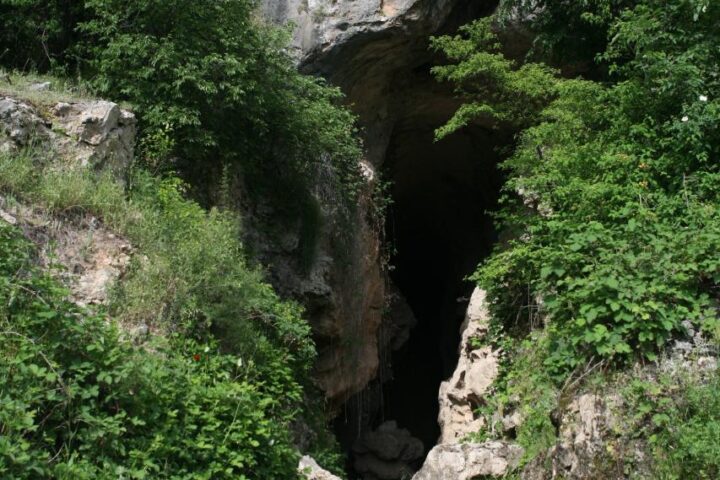In I Millennium BC such tribes, as Gargars, Utis, Saks, Sodes, which along with other tribes constituted the Albanian tribe union, lived in the territory of the present-day Karabakh.
Talking about the ethnic belonging of the most ancient inhabitants of Karabakh, it is necessary to note, that the overall information, which have reached us from the written sources of the ancient time, is rather poor. There are different scientific versions, the most widespread of which is the belonging of the most ancient inhabitants of Karabakh to the Caucasian group of languages. At the same time, versions about the Turkic origin of the Albanian tribes (not related to the Albanians in the Balkans), or a part of them, which inhabited the territory of present-day Karabakh and of all Northern Azerbaijan, are worth to consider as well. The question on the ethnic belonging of the Caucasus Albanians requires further thorough researches.
It is known, that in I Millennium BC such tribes, as Gargars, Utis, Saks, Sodes, which along with other tribes constituted the Albanian tribe union, lived in the territory of the present-day Karabakh. According to the ancient authors, the number of the Albanian tribes reached 26.3 The zone of their inhabitance occupied approximately the territory of the current Northern Azerbaijan.
During the Medea-Ahemenides period (VI-IV c. BC) the territory ruled by the Medeans, and by Persians covered all Southern Caucasus, including Karabakh. The Armenian historians try to assert, that, ostensibly, already at this time Karabakh was a part of Armenia. But the historical sources testify quite the opposite.
There is no doubt, that the Albanian tribe union was autochthonous in the territory of Karabakh, and in all the territory of the present-day Northern Azerbaijan. However, this is not the case with the Armenians and the Armenian language, which could have appeared in the Caucasus, at the best, not earlier than the period of invasive wars of the Armenian kings Artashes and Zariadrij, i.e. after II c. BC.
Now it is well known, that the current Armenia is not the native land of the Armenian ethnicity. The Armenians in the Caucasus – are, absolutely, an outside element. The ancient Armenian people have developed in the area of the upper Euphrates valley approximately in the first half of I Millennium BC.4 Even Herodotus wrote in V c. BC, that Armenia was «a small country» on the sources of the Tigris and Euphrates rivers.5
Xenophontus confirms Herodotus’s data, saying, that when he stepped on the land of the Fasians and Taokhs, which later began to be called Northern-Central Armenia, he understood, that Armenians were left behind.6 Ancient Armenian chroniclers also write, that the small Armenian state created after Urartu’s fall, lived very shortly and was taken over, first by Medea, and after 550 BC was seized by the Iranian Ahmenids. Thus, the statements of some Armenian historians claiming that Karabakh was a part of the Armenian State in VI-IV cc. BC are groundless.
Approximately in IV-III cc. BC Albanian tribes united and established the Caucasian Albanian State. Moses Khorenatsi, an ancient Armenian historian, testifies that Arran, who obviously was a legendary ancestor, so to say the eponym of the Albanians, had got «all the Albanian plain with its highland part…» and that «the tribes of Utis, Gardmans, Tsavdeys and the Gargarian principality derives from the descendants of Arran».7 All of the above-mentioned tribes were the Albanian tribes.
It is almost doubtless, that among the mentioned tribes Utis, Tsavdeys and Gardmans were the inhabitants of Karabakh. Thus, the historical sources definitely testify the Albanian origin of the tribes of the Karabakh area.
The authors of the antiquity mentioned about the Albanian tribe of Utis/Otens. Herodotus was also among them. According to Plinius, the area of inhabitance of the Utis bordered Atropatena along the Araz river and namely in the part which adjoined the Mukan (currently Mugan plain in Azerbaijan), where the tribe of Miks resided. Just like the Miks, Utis appear in the historical arena in the first quarter of V c. BC, partaking in Iranian king Kserks’s crusade to Greece and participating in the famous Gavgamel battle.
Tribe of the Sodis (Tsavdeys), seemingly, should be identified with a tribe, the name of which is attested in the name of the Soduken(a) region which is located in the mountainous region of the present-day Karabakh, at that time known under name of Artsakh.
Gargars are one of the major Albanian tribes. They lived in Artsakh and in the low lands. There are assumptions, that the Albanian alphabet, consisting of 52 letters, was formed based on the Gargarian dialect of the Albanian language.8
- Strabo XI, 4, 6
- Dyakonov I.M. «Pred’istoriya armyanskogo naroda» (Ancient history of the Armenian people) Yerevan 1968, p. 237 (in Russian)/ also: I. Aliyev «Karabakh in the ancient times» Documents and Publications p 24;
- Herodotus I, 80
- Hewsen R.H. Ethno-history and the Armenian influence upon the Caucasian Albanians 1982, 4, p.31 / also I. Aliyev, «Karabakh in the ancient times», Documents and Publications p. 24;
- Moses Khorenatsi II, 8
- Id. III, 54




